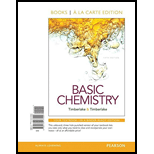
Concept explainers
(a)
Interpretation:
We need to comprehend the difference between an ionic bond (salt bridge) and a disulfide bond.
Concept Introduction:
Proteins are
(b)
Interpretation:
We need to comprehend the difference between alpha helix and β-pleated.
Concept Introduction:
Proteins are biomolecules which are composed of amino acid molecules. Here amino acids are bonded with each other through peptide linkage. Peptide linkage is formed between −NH2 and −COOH groups of amino acids with the elimination of water molecule. Hence each step of formation of peptide bond is a condensation reaction.
(c)
Interpretation:
We need to comprehend the difference between tertiary and quaternary structures of proteins.
Concept Introduction:
Proteins are biomolecules which are composed of amino acid molecules. Here amino acids are bonded with each other through peptide linkage. Peptide linkage is formed between −NH2 and −COOH groups of amino acids with the elimination of water molecule. Hence each step of formation of peptide bond is a condensation reaction.
Want to see the full answer?
Check out a sample textbook solution
Chapter 18 Solutions
Basic Chemistry, Books a la Carte Edition (5th Edition)
 ChemistryChemistryISBN:9781305957404Author:Steven S. Zumdahl, Susan A. Zumdahl, Donald J. DeCostePublisher:Cengage Learning
ChemistryChemistryISBN:9781305957404Author:Steven S. Zumdahl, Susan A. Zumdahl, Donald J. DeCostePublisher:Cengage Learning ChemistryChemistryISBN:9781259911156Author:Raymond Chang Dr., Jason Overby ProfessorPublisher:McGraw-Hill Education
ChemistryChemistryISBN:9781259911156Author:Raymond Chang Dr., Jason Overby ProfessorPublisher:McGraw-Hill Education Principles of Instrumental AnalysisChemistryISBN:9781305577213Author:Douglas A. Skoog, F. James Holler, Stanley R. CrouchPublisher:Cengage Learning
Principles of Instrumental AnalysisChemistryISBN:9781305577213Author:Douglas A. Skoog, F. James Holler, Stanley R. CrouchPublisher:Cengage Learning Organic ChemistryChemistryISBN:9780078021558Author:Janice Gorzynski Smith Dr.Publisher:McGraw-Hill Education
Organic ChemistryChemistryISBN:9780078021558Author:Janice Gorzynski Smith Dr.Publisher:McGraw-Hill Education Chemistry: Principles and ReactionsChemistryISBN:9781305079373Author:William L. Masterton, Cecile N. HurleyPublisher:Cengage Learning
Chemistry: Principles and ReactionsChemistryISBN:9781305079373Author:William L. Masterton, Cecile N. HurleyPublisher:Cengage Learning Elementary Principles of Chemical Processes, Bind...ChemistryISBN:9781118431221Author:Richard M. Felder, Ronald W. Rousseau, Lisa G. BullardPublisher:WILEY
Elementary Principles of Chemical Processes, Bind...ChemistryISBN:9781118431221Author:Richard M. Felder, Ronald W. Rousseau, Lisa G. BullardPublisher:WILEY





